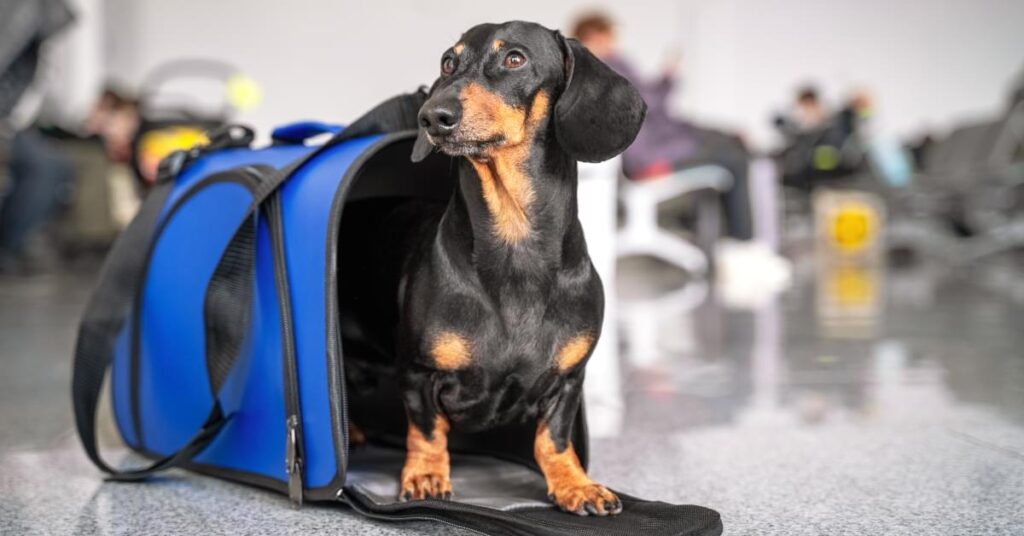Moving to a new country can be an exciting adventure, but it also comes with its fair share of challenges, especially when you have furry friends to consider. International pet travel requires careful planning and adherence to specific regulations to ensure the safety and well-being of your pets. In this blog post, we will provide you with detailed tips and guidelines to help you navigate the process of moving abroad with pets.
Research and Preparation
Start Early
Begin your research and preparations well in advance to allow sufficient time for paperwork, vaccinations, and other necessary procedures.
Destination Requirements
Familiarize yourself with the import regulations of your destination country. Each country has different rules regarding pet entry, quarantine periods, microchipping, and vaccinations. Check the official government websites or consult with the embassy or consulate of the destination country for accurate and up-to-date information.
Pet-Friendly Accommodation
Ensure that you find suitable pet-friendly accommodation at your destination. Verify any specific pet policies, restrictions, or additional fees imposed by landlords or housing associations.
Veterinary Requirements
Schedule a Veterinary Visit
Take your pets for a thorough veterinary examination well in advance of your travel date. The veterinarian will assess their health, administer necessary vaccinations, and provide required documentation.
Microchipping
Many countries require pets to be microchipped with an ISO-compliant microchip before travel. Ensure that the microchip is implanted and registered properly.
Vaccinations
Make sure your pets are up to date on their vaccinations, including rabies. Some countries may have specific requirements for vaccination types and timelines. Keep all vaccination records and certificates organized.

Pet Travel Documentation
Pet Passports
Obtain a pet passport or any other required travel documents for your pets. These documents typically include health certificates, vaccination records, microchip details, and proof of ownership.
Export/Import Permits
Some countries may require export or import permits for pets. Research and apply for these permits in advance, following the guidelines provided by the destination country.
Translation and Notarization
If the official documents are in a language different from that of your destination country, consider getting them translated and notarized to avoid any potential issues.
Travel Arrangements
Pet-Friendly Airlines
Research airlines that allow pets to travel in-cabin or as cargo. Check their specific pet travel policies, including crate requirements, weight limits, and any additional fees.
Crate Training
Familiarize your pets with their travel crates well in advance. Gradually increase the duration of crate time to ensure they are comfortable and stress-free during the journey.
Direct Flights
Whenever possible, choose direct flights to minimize travel time and reduce stress for your pets.
Pet Comfort and Safety
Health Check
Before departure, have your pets undergo a final health check to ensure they are fit to travel.
Identification
Attach clear identification tags to your pet’s collar with your contact information and destination address.
Travel Essentials
Pack essential items such as food, water, medications, bedding, toys, and any other comfort items your pets may need during the journey.

FAQs
Q: What is the first step I should take when planning to move abroad with my pet?
A: The first step is to research the import regulations of your destination country. Check their requirements for pet entry, including quarantine periods, microchipping, vaccinations, and any necessary documentation.
Q: Is it mandatory to microchip my pet before traveling internationally?
A: Many countries do require pets to be microchipped with an ISO-compliant microchip. It is important to ensure that the microchip is properly implanted and registered to comply with the regulations of your destination country.
Q: Can I travel with my pet in-cabin on an airplane?
A: Some airlines allow pets to travel in-cabin if they meet certain size and weight restrictions. However, each airline has its own policies, so it is crucial to research and choose a pet-friendly airline that accommodates in-cabin travel if that is your preference.
Q: How far in advance should I start preparing for my pet’s international travel?
A: It is recommended to start preparations at least several months in advance of your planned travel date. This allows enough time for veterinary visits, vaccinations, obtaining necessary documents, and complying with any specific waiting periods or processing times required by the destination country.
Q: What should I do to ensure my pet’s comfort and well-being during the journey?
A: To ensure your pet’s comfort, crate train them well in advance, provide familiar bedding and toys, and pack essentials such as food, water, medications, and any comfort items. Additionally, it’s important to have a final health check for your pet before departure and attach clear identification tags with your contact information.
Q: Will my pet need to undergo quarantine when entering a new country?
A: Quarantine requirements vary by country. Some countries have specific quarantine periods for pets to ensure they meet health and safety standards. Research the quarantine regulations of your destination country to determine if it applies to your pet and plan accordingly.
Q: How can I find a reliable pet relocation service to assist with the international move?
A: To find a reputable pet relocation service, consider researching and comparing different companies. Look for reviews and testimonials from previous customers, check if they are members of professional pet relocation associations, and inquire about their experience and expertise in handling international pet travel.
Q: Are there any breed-specific restrictions or regulations for international pet travel?
A: Some countries have restrictions or regulations related to specific dog breeds considered to be dangerous or potentially aggressive. These restrictions may include additional requirements or even a ban on certain breeds. Research the destination country’s regulations regarding your pet’s breed to ensure compliance.
Conclusion
Moving abroad with pets requires thorough research, meticulous planning, and adherence to international regulations. By following the tips and guidelines provided in this blog post, you can ensure a smooth and safe transition for your furry friends. Remember to consult with professionals, such as veterinarians and pet relocation specialists, for personalized advice based on your specific situation. With careful preparation, your pets can embark on this new adventure with you and continue to be a part of your loving family wherever you go.
Also Read: The don’ts of moving houses: Mistakes to avoid when moving


